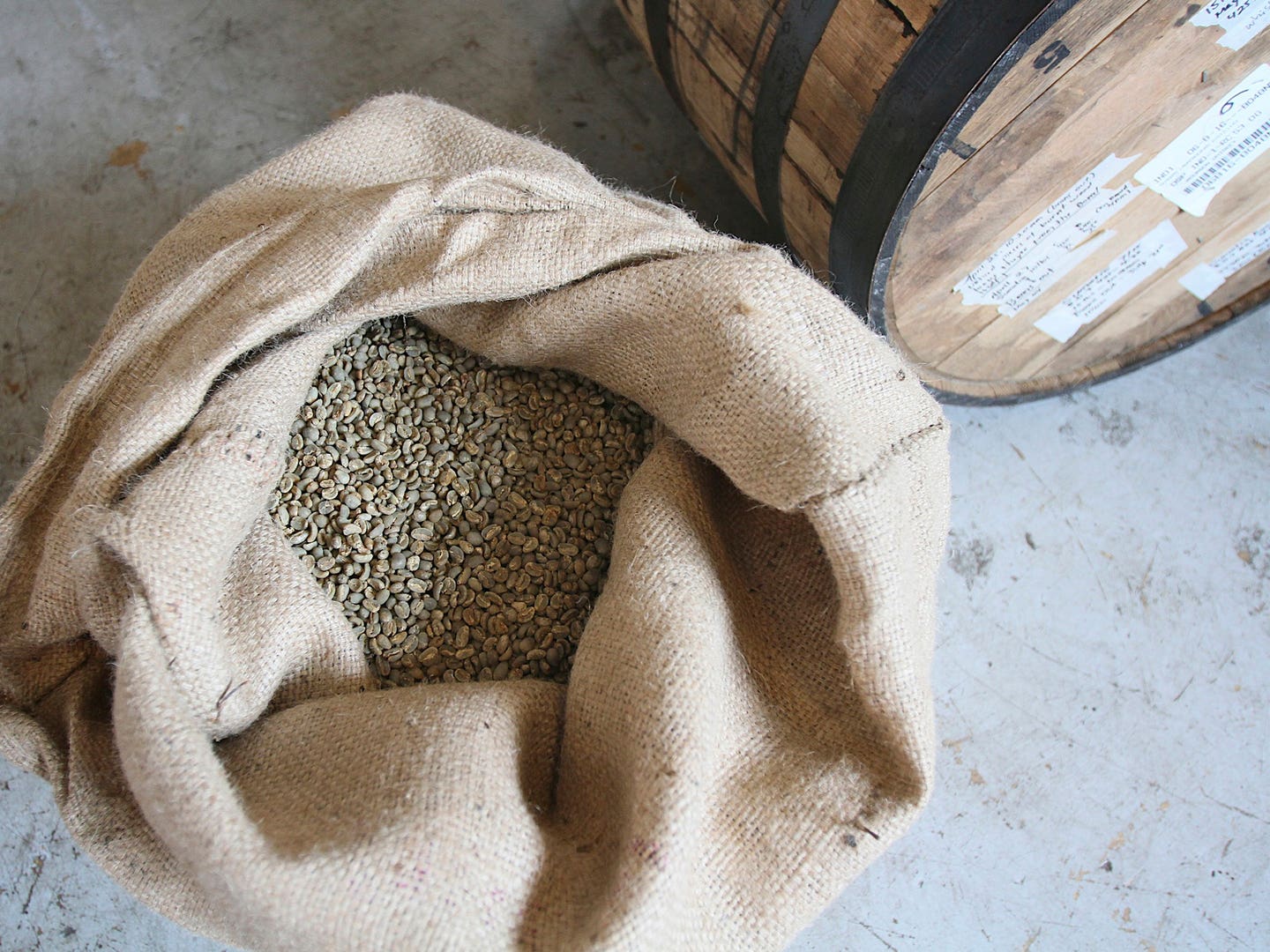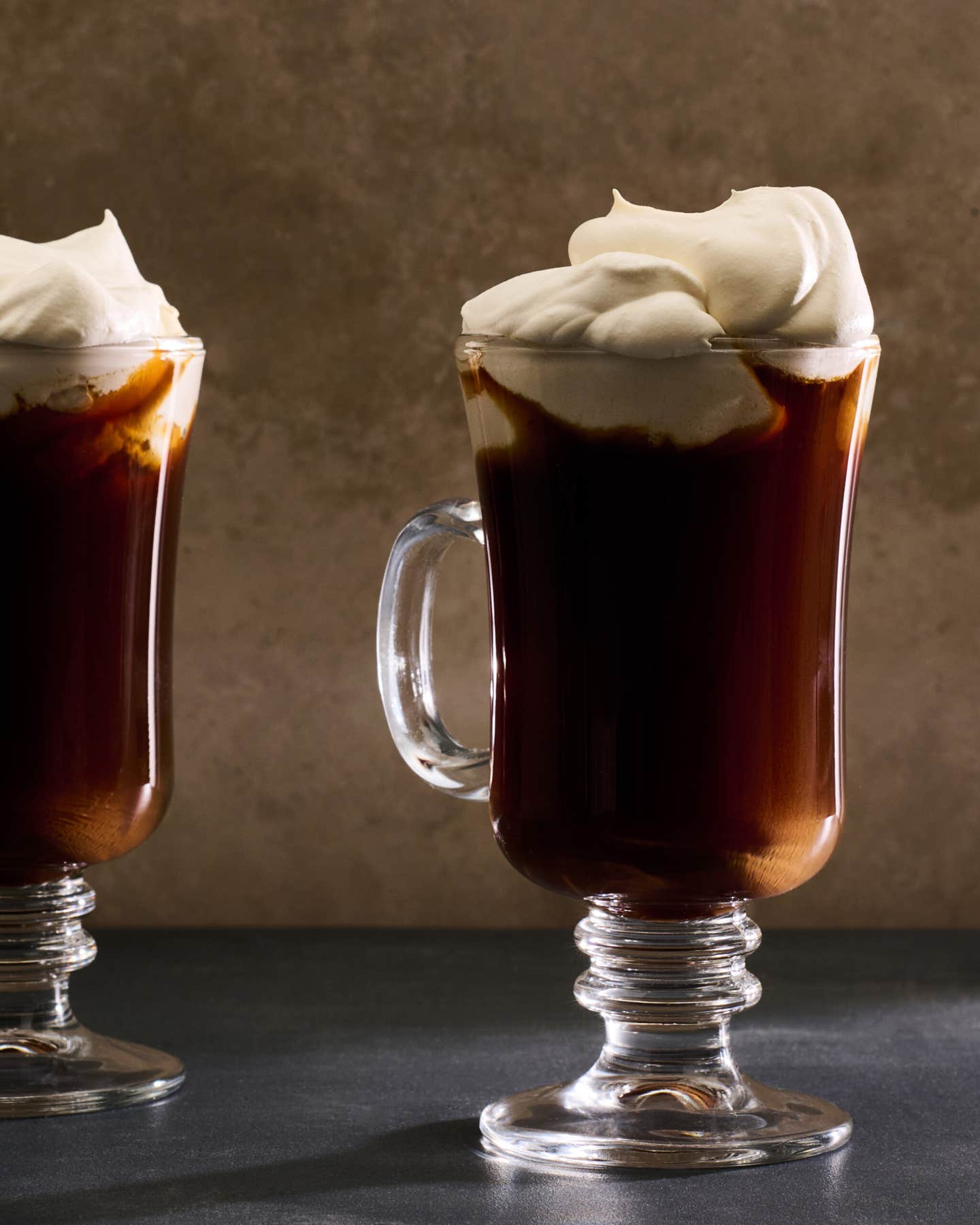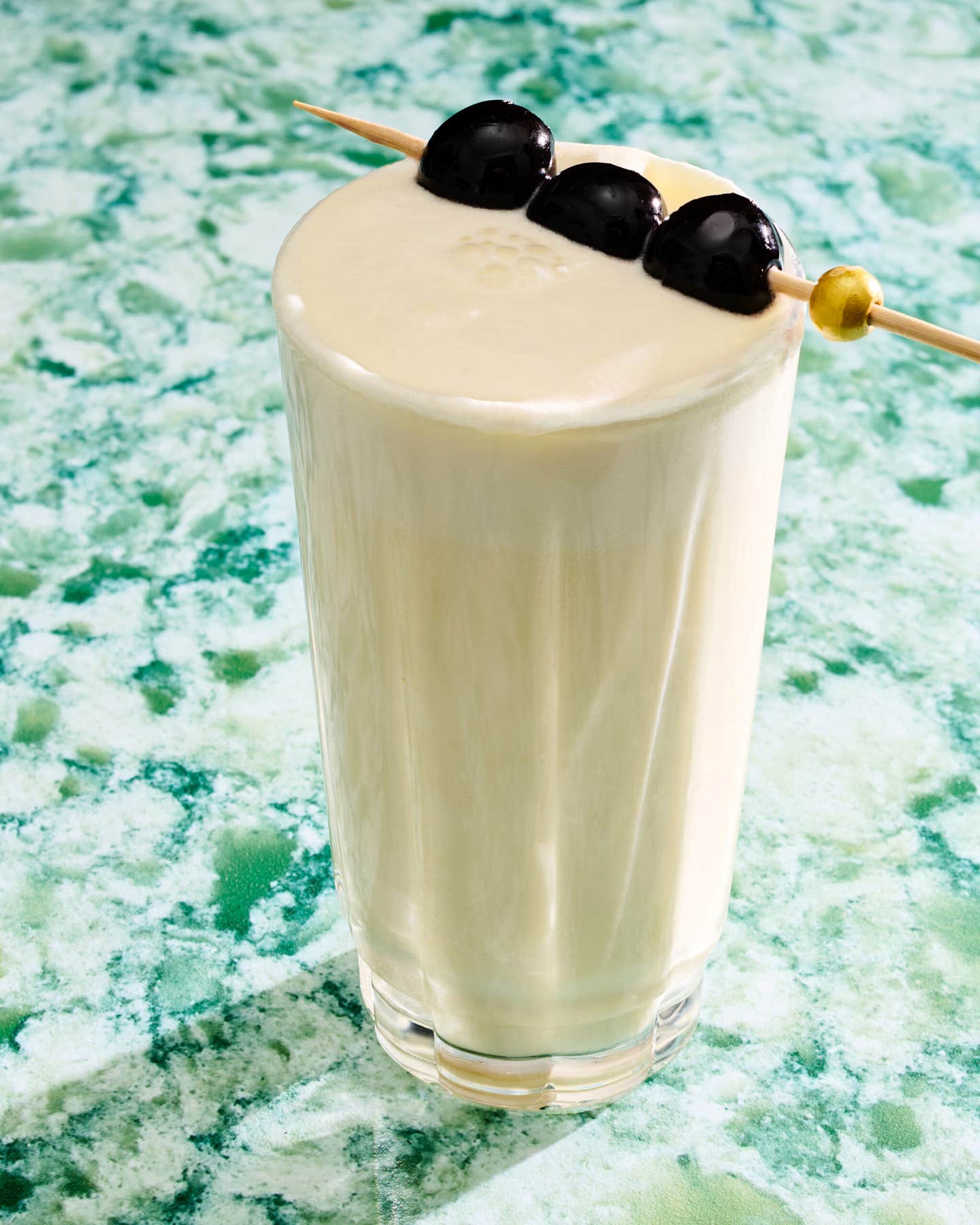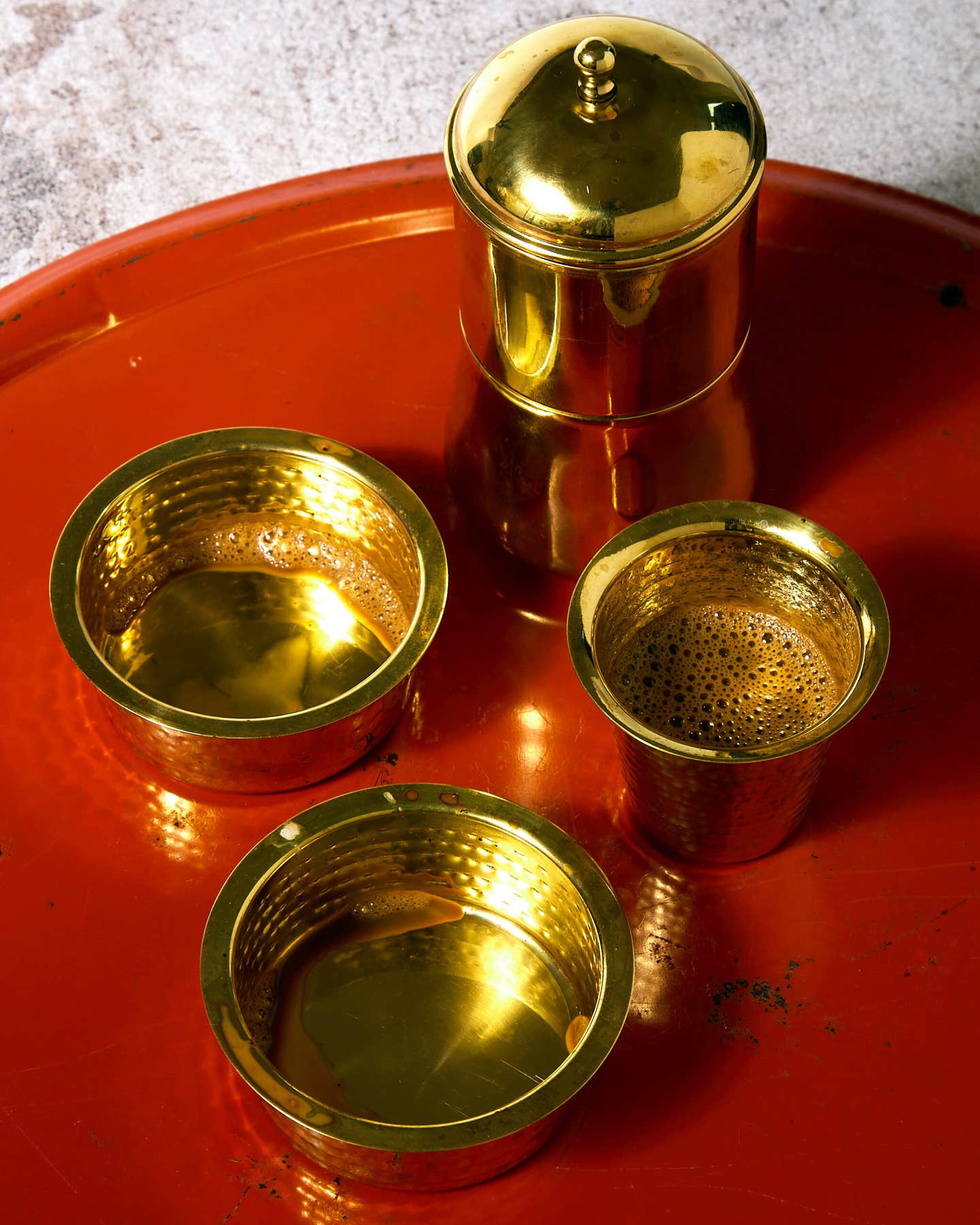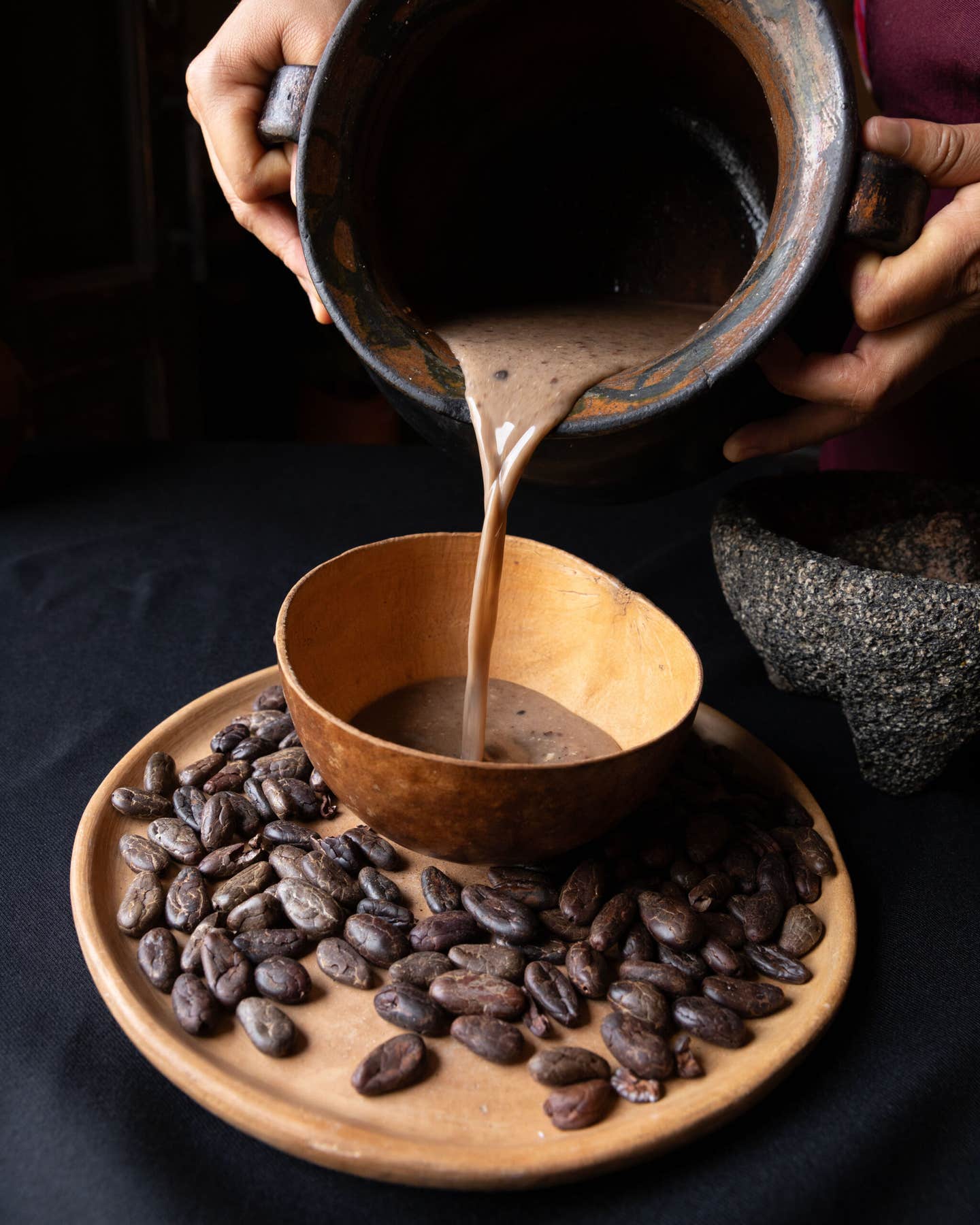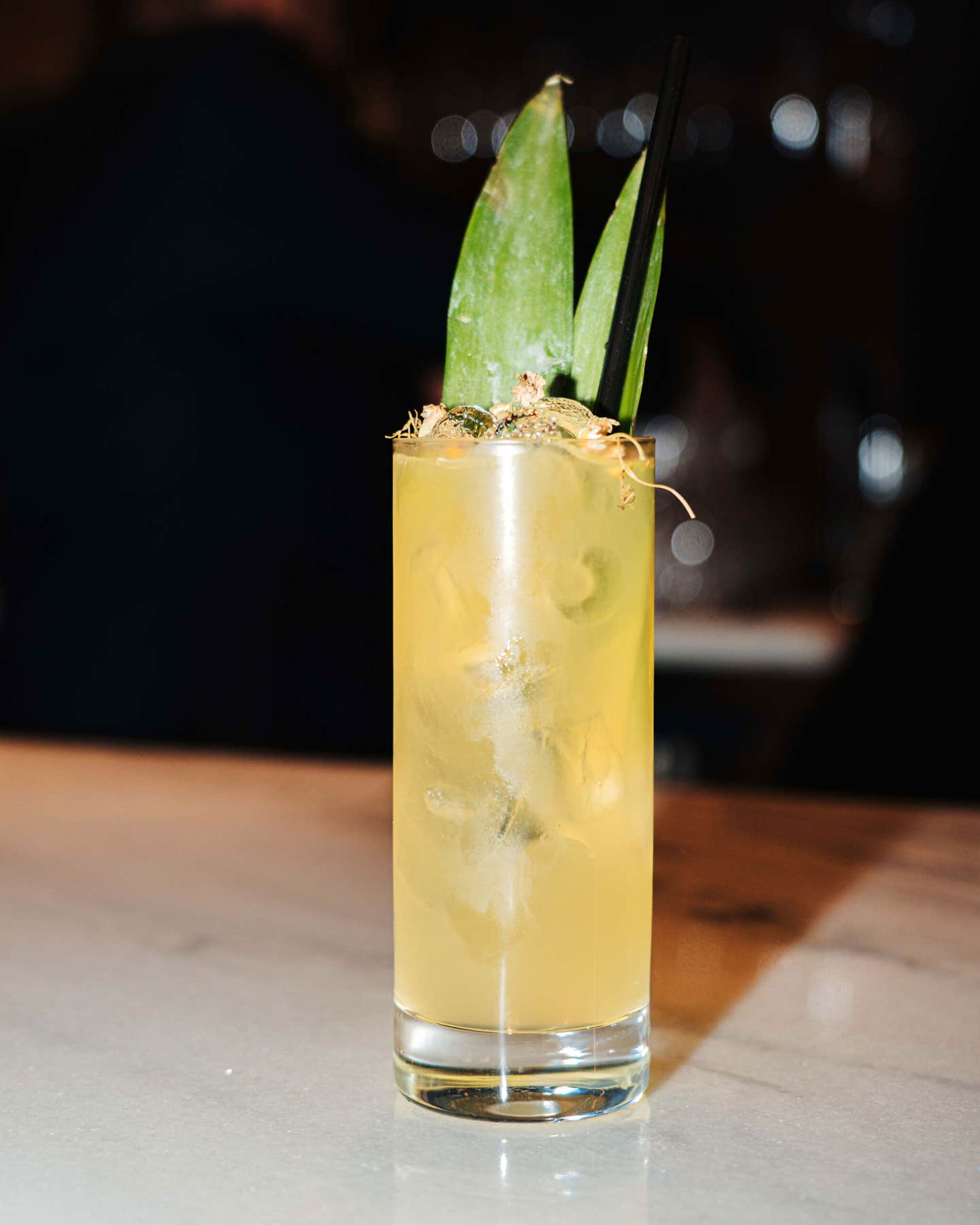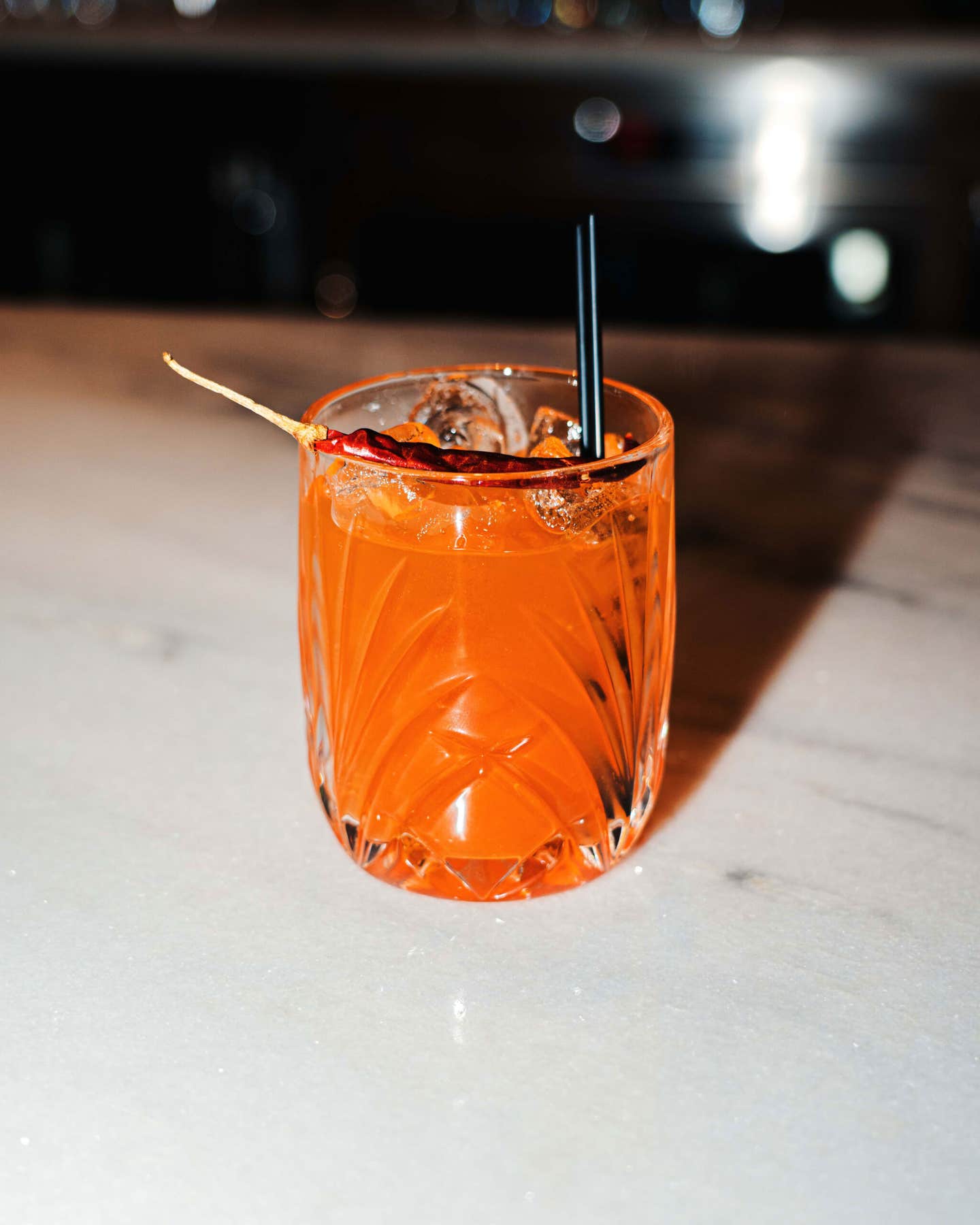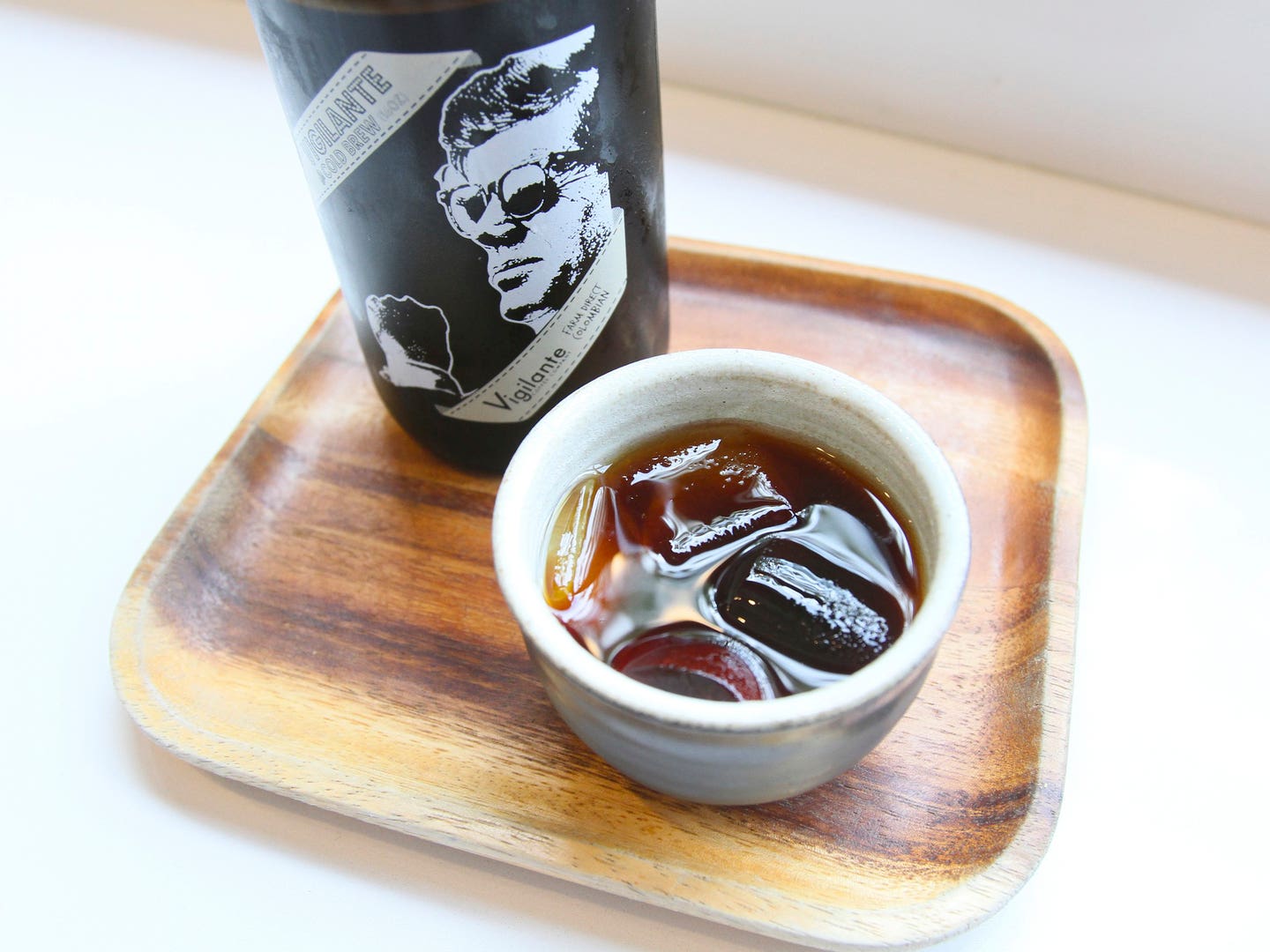
Listening for the Coffee Beans to Pop
In Washington D.C., Vigilante Coffee treats their iced coffee like whiskey and ages it in barrels
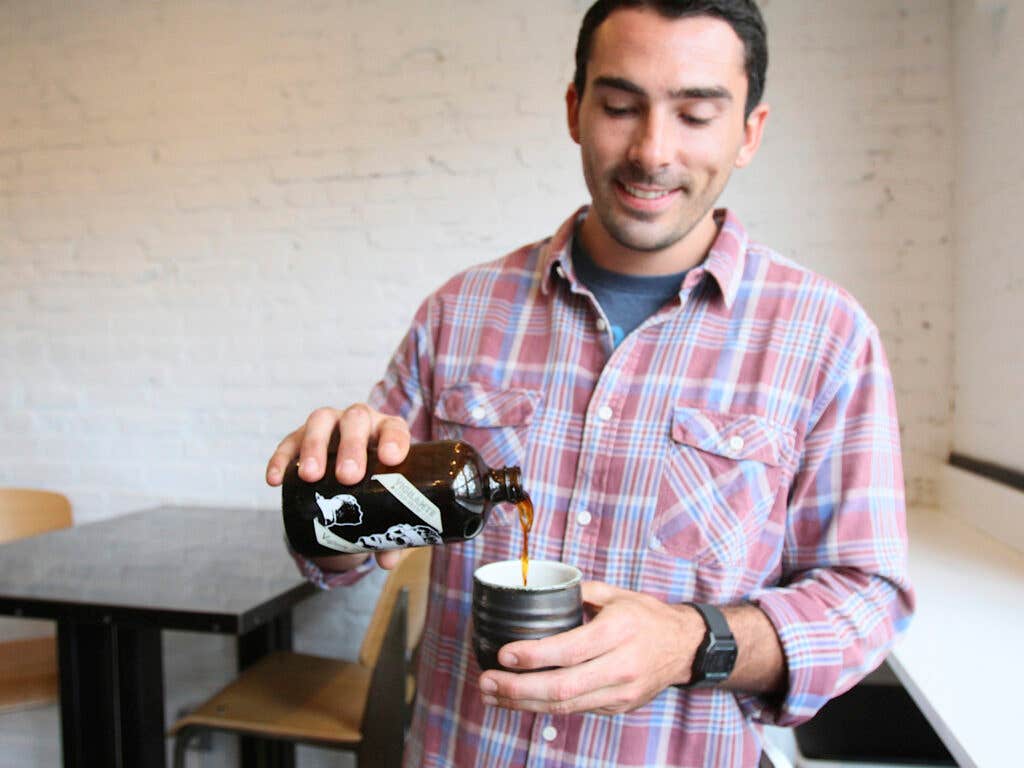
On the second floor of D.C.'s Maketto, above the stylish ground-level restaurant, Chris Vigilante has his ear pressed to a small red roaster. He'll tell me all there is to know about his latest experiment—a bourbon-tinged Sumatran cold brew—but first, he says, we'll listen together for first crack.
“It’s going to sound like popcorn popping,” he says. “This is a very clutch time in the roast and where we determine flavor profile.”
Vigilante Coffee’s roasting is all manual, whether it’s done here in Maketto’s beautiful upstairs café or at the Vigilante warehouse in Hyattsville, Maryland. It’s a point of pride for the coffee company’s CEO: “There’s no computer telling us what to do to dictate the roast.”
Today he's roasting an African coffee from Burundi, but it's the Sumatra Mandheling beans I can't wait to try. A batch of them, already roasted for 12 to 14 minutes, then course-ground and submerged in cold water, hangs from the lip of a large plastic bucket in the café's fridge. Though it's standard cold-brew procedure, these aren't standard beans. They're part of Vigilante's "Untitled Collaborations": partnerships with local companies and programs to push the boundaries of coffee. When D.C.'s One Eight Distilling approached the team with a few nine-year-old rye bourbon barrels, Vigilante jumped at the opportunity and set out to make the finest barrel-aged coffee he could.
Sumatran beans, already having undergone the Indonesian Giling Basah process—a wet hulling method that leaves the beans with full-bodied flavor—seemed the obvious choice to complement the whiskey’s caramel tones. From there, it was all trial and error.
Vigilante’s bean experiments fell into three categories: halfway-roasted and aged in the barrels for five days, then removed and finished in the roaster; raw green beans placed in the barrels for two weeks, then pulled and roasted (“Though when we roasted those we had to have a fire extinguisher nearby because the alcohol had surrounded the green beans,” Vigilante laughs); and fully roasted and aged in the barrel for around six days.
“The green beans were almost overwhelming in their whiskey flavor,” he says. “The half-roasted just didn’t taste fully developed—the coffee tasted watered down. But the fully roasted had absorbed just the right amount of aroma and the aftertaste of the whiskey”—the Goldilocks of coffee.
When cold-brewed for 24 hours, the heavy body, dark chocolate and maltiness of those just-right beans sings through the toasty, slightly sweet essence of One Eight’s bourbon. The result is a bright iced coffee with depth worth drinking all year long. Due to the experimental nature of the process, so far it’s only available in D.C. and Hyattsville—and you can only find it once every month or so. But according to Vigilante, the response has been overwhelmingly positive, leading to larger batches and possible online sales in the not-too-distant future. Until then, I’ll just look forward to the next phase of the collaboration.
“It’s a dual experiment,” Vigilante says. “They hand us barrels, we put roasted coffee in, the coffee absorbs inside the barrel, then we give the barrels back to those guys. They put whiskey in them and it absorbs some of the taste of the coffee, and [One Eight Distilling] plans to release it in the fall.”
Stephanie Breijo is the food editor of Richmond Magazine in Richmond, Virginia, where she has consumed more pimento cheese in the last year than she previously had in her entire life. Her photo and/or written work has appeared in The Washington Post (Express), Food & Wine, Time Out New York and more.
Keep Reading
Continue to Next Story
